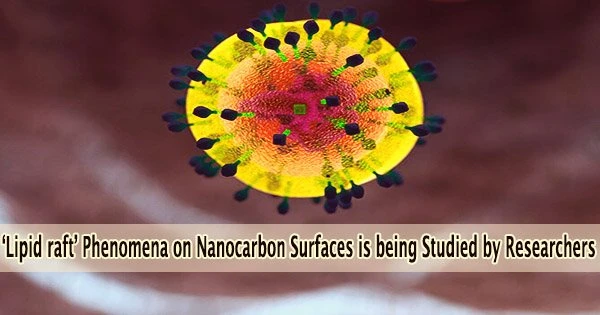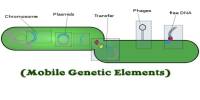The multicomponent lipid bilayer membrane used as a model for cell membranes was found to exhibit a phenomenon where certain lipids were concentrated on graphene oxide. A research team from the Department of Applied Chemistry and Life Science at the Toyohashi University of Technology identified this phenomenon.
The findings are published in the International Journal of Molecular Sciences.
Due to the surface properties of graphene oxide, the study team further elucidated the method by which the constituents of “lipid rafts” gather (where important cell membrane reactions like neurotransmission and metabolism occur).
The lipids and proteins in cell membranes, which are crucial targets for drug development, are expected to be concentrated and separated using the basic technologies that will be developed as a result of this discovery.
Cell membranes operate as conduits for the materials, data, and energy required for cellular activity to move inside and outside of the cell. Due to their crucial roles in neurotransmission, metabolism, and viral infections, these exchanges are crucial research topics in the domains of biology, medicine, and drug discovery.
The fundamental structure of the cell membrane is a lipid bilayer membrane. Through the lateral diffusion and aggregation of molecules within the membrane, certain lipids and membrane proteins collect.
These areas are referred to as lipid domains, which in turn regulate and enhance the effectiveness of the reactions taking place in the cell membrane. The “lipid raft,” which is full of sphingolipids and cholesterol, is a prime illustration of the lipid domain.
Regardless of the lipid composition, the less fluid lipid domains clustered on the graphene oxide. This was owing to the presence of a mixture of hydrophilic and hydrophobic regions on the graphene oxide surface on a nanometer scale. The initial process of the domain formation in the lipid bilayer occurred preferentially in the hydrophobic regions of the graphene oxide.
Professor Ryugo Tero
For the biosensing and screening of lipids and membrane proteins, new technologies are required for directing and organizing the placements of lipid domains on a solid substrate.
On a silicon substrate that was coated with a graphene oxide monolayer, this research team created an artificial lipid bilayer. They made the initial discovery that the graphene oxide was where the lipid domains were concentrated.
Graphene oxide has a structure in which hydrophilic oxygen functional groups are added to graphene (a monoatomic sheet material of carbon).
The majority of the low-fluidity gel phase domains in the lipid bilayer membrane congregated on the graphene oxide in a two-component lipid bilayer made of two different types of phosphatidylcholines.
Many lipid raft components were found on the graphene oxide in a three-component mixed lipid bilayer membrane made of sphingolipids, cholesterols, and phosphatidylcholine.
Professor Ryugo Tero, the leader of the research team, explains, “Regardless of the lipid composition, the less fluid lipid domains clustered on the graphene oxide. This was owing to the presence of a mixture of hydrophilic and hydrophobic regions on the graphene oxide surface on a nanometer scale. The initial process of the domain formation in the lipid bilayer occurred preferentially in the hydrophobic regions of the graphene oxide.”
According to the research team, placing membrane proteins with a high affinity for those lipids in the same regions requires regulating the placements of the lipid domains on the solid substrate. The core technologies of biosensing and membrane protein screening can benefit from this discovery.
The research team also thinks that glycolipids, which are crucial for biochemistry, can be collected using the same technique as lipid rafts. The development of methods for concentrating and purifying the uncommon lipids and membrane proteins in cell membranes is anticipated to benefit from this, according to the researchers.
















